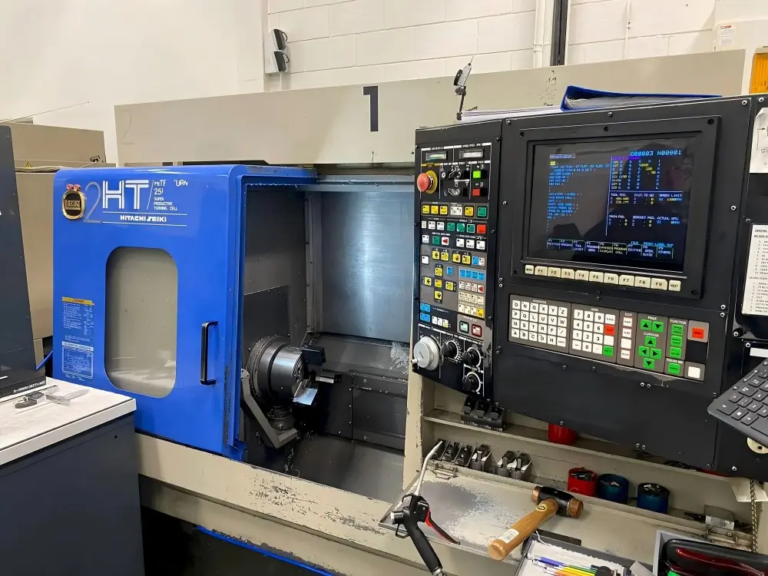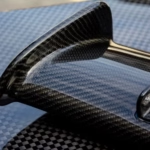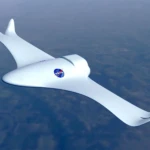CNC Market in 2024: Browse New Frontiers in Precision Manufacturing
The computer numerical control (CNC) processing industry is an exciting turning point in 2024. Driven by unremitting innovation and evolving market demand, the industry continues to change how complex, high-precision components are manufactured. From aerospace and medical implants to electric vehicles and consumer electronics, CNC processing remains the backbone of modern industrial production. As we dig deep into the key trends shaping this landscape, understanding these shifts is essential for businesses seeking competitive advantage and operating excellence.
Key drivers of reshaping the 2024 CNC market
Several effective forces are being merged:
- Need for unprecedented complexity: Industry sectors such as aerospace (turbo blades), medical (patient-specific implants) require geometrically complex parts. Without multiple settings, traditional 3-axis machining often fails to meet these needs, increasing costs and error risks.
- Advanced Material Challenge: Manufacturers are increasingly working with high-performance alloys (Inconel, Titanium), composites and specialized polymers. These materials require complex machining strategies to prevent tool wear, distortion or material degradation.
- Supply Chain Resilience: The pandemic era stresses the shorter lead times, local/regional procurement, and the ability to rapidly prototyping and iterative design, thus putting pressure on processing speed and flexibility.
- Cost and efficiency pressure: The rising energy costs and global competition require optimizing production processes, minimizing waste and maximizing machine uptime.
Define trends in 2024
Five-axis CNC machining: From luxury to necessity: No longer retained for niche applications, five-axis machining quickly became standard For complex parts production and prototyping. Its ability to position parts or tools on five different axes simultaneously unlocks unrivaled benefits:
- Single mastery: The complex geometry is processed into a clamp, greatly reducing processing time, eliminating alignment errors between settings, and improving overall parts accuracy and surface effect.
- Access and Tool Performance: The enhanced tool orientation allows access to impossible deep cavity through 3 axes, while also enabling optimal tool-to-bench connection. This can extend tool life, allow for higher feed rates and improve processing dynamics.
- Prototyping and Production Agility: The conception cycle accelerates significantly. Complex prototypes and small batches are faster and more cost-effective.
- Allied technology: Integrated setup verification and process monitoring with touch probes and advanced CAM software to improve confidence and reduce waste.
AI and machine learning infusion: Artificial intelligence is moving beyond the state of buzzwords to tangible store flooring applications:
- Predictive maintenance: Sensors monitor vibration, temperature, power consumption and acoustic emissions. AI algorithm predicts tool failure and machine component wear forward They can cause downtime or quality issues to optimize maintenance schedules.
- Adaptive process control: Real-time AI adjusts feed, speed and cutting path during processing based on actual sensor feedback, compensates for tool wear, inconsistent material or unexpected chat. This maintains consistent quality and prevents damage to parts.
- Optimized toolpath generation: AI enhances CAM software analyzes production goals (speed, surface quality, tool life) and automatically generates more efficient tool paths, reducing machining time and improving results.
Sustainability becomes operational: Environmental responsibility is now the core manufacturing of KPI:
- Energy-saving machine: Newer CNC machines combine energy-saving motors, regenerative drivers and intelligent power management systems that greatly reduce the carbon footprint.
- Minimize waste: Optimized cam nesting minimizes raw material waste. Coolant management system extends the life of coolant. Recycling of metal blades is standard practice.
- Digital Twins and Analog: Use digital twins to perform virtual processing to predict potential problems, digital optimization process forward Cutting metal greatly reduces physical tests and wrong waste rates and material/energy waste.
Hybrid manufacturing gains appeal: Combining subtraction (CNC machining) with additive manufacturing (3D printing) in a single platform or integrated workflow provides unprecedented flexibility:
- Near mesh and finishing: Using the CNC function, combined with the added complex shapes can be processed to precise tolerances and finishes.
- Repair and remanufacturing: Weared or damaged high-value parts (such as turbine blades) can be added by laser deposition or other methods and then accurately refueled to specifications.
- Integrated materials: Combining different materials, such as metal bases with polymer or ceramic features, becomes feasible in one section.
- Cloud Connectivity and IIOT Power Smart Factory: The Industrial Internet (IIOT) transforms CNC stores into an interconnected ecosystem:
- Real-time OEE dashboard: The cloud platform aggregates data from multiple machines to track overall device effectiveness (OEE) to identify bottlenecks.
- Remote monitoring and diagnosis: Engineers can monitor work remotely, solve problems, and even perform diagnostics remotely, making response time and expert support distribution faster.
- Workflow integration: Store floor data is seamlessly integrated with ERP/MES systems for automatic scheduling, inventory management and real-time progress tracking.
Greglime: Pioneer in precision manufacturing innovation
In this rapidly developing landscape, Great Distinguish between partners that require precise processing requirements. As a dedicated Professional five-axis CNC processing manufacturerWe use the trends that define 2024 to provide excellent value:
- The most advanced five-axis functions: We operate the latest generation of five-axis CNC machining centers equipped with advanced control systems and precision spindles that allow us to handle geometric shapes that other stores cannot.
- Multi-material proficiency: In addition to standard metals (aluminum, stainless steel), we excel in processing challenging alloys (titanium, inconel, magnets), engineered plastics (PEEK, PEI) and composites, and have strategies for each strategy.
- One-stop solution: We eliminate supplier headaches by providing a comprehensive post-processing and finishing service in-house – from fine burrs, bead blasting and polishing to anodizing, gilding, painting and complex components. This ensures seamless quality control and faster turnaround speeds.
- Agile customization and prototype: "Most materials can be customized and processed" – This is the core of our service. Whether you need complex concept models, functional prototypes, or low/medium production, our flexibility and fast responsiveness shine.
- Commitment to quality and value: We combine cutting-edge technology with deep engineering expertise to provide Custom precision machining Solution Best Price Uncompromising strict quality standards that are crucial to aerospace, medical and industrial applications.
Conclusion: Embrace the future, layoffs
The CNC market in 2024 is defined by technological strength and expectations. Success depends on leveraging the power of five-axis machining, embracing AI-driven insights, prioritizing sustainability, exploring hybrid approaches and integrating them into connected factories. For customers, choose like Greatequipped with advanced features and a commitment to one-stop accuracy is crucial. We not only follow trends; we use them to effectively and reliably solve complex manufacturing challenges, ensuring your innovations are faster than ever before, from design to high performance. Don’t just adapt to the future of manufacturing; lead it.
Ready to experience the differences in advanced five-axis CNC machining? Customize your precision parts now at the best prices!
Frequently Asked Questions about CNC Processing (FAQ)
Q: What is the real difference between 3-axis and 5-axis CNC machining?
- one: Think of 3 axes, for example moving along a straight line (x, y, z). 5 axes add rotation about two of the axes (usually A&B or similar), so that the tool approaches the workpiece from almost any angle In a setting. This means a considerable increase in complexity that is handleable, reduced set-up time, better accuracy on complex features, and an excellent surface finish on contoured surfaces.
Q: Why sometimes it takes longer, and why use complex CNC parts?
- one: Complexity drives planning time. Complex geometry requires careful design of CAM programming and potential simulations to ensure collision avoidance and optimal tool paths. Ensuring rare materials, performing multiple demanding completion processes (such as specialized coatings), and rigorous quality verification (such as CMM inspection) adds necessary steps. Trusted manufacturers spend time upfront to prevent expensive errors and ensure that the final part meets specifications. Greglight focuses on Efficient Perform these basic steps.
Q: Can CNC machines really handle superhard materials used in aviation/medical care?
- one: Absolutely, but it requires expertise. Processing high temperature alloys such as Inconel, hardened steel or titanium requires specialized tools (carbide grade, advanced coating), accurate coolant strategies (high pressure through spindle coolant is common), optimized cutting parameters (speed/feed/feed/cutting speed/depth), and strong machine rigidity. This is a key area, and the Greatlight experience and advanced five-axis capabilities are both excellent.
Q: How can one-stop service benefit me as a customer?
- one: Efficiency and control. Managing multiple suppliers for processing, plating, painting, assembly, etc. consumes time, increases communication risks and complicates quality tracking. A single source like Greatlight manages all stages under a roof. This simplifies communication, ensures seamless process handover (critical for tight tolerances affected by finishes), provides unified quality accountability, and ultimately provides your Completed part Faster and more reliable.
Q: What file formats do you need to reference and manufacture?
- one: For accurate reference and machining, we strongly prefer native 3D CAD files (e.g., steps, IGES, SOLIDWORKS, CATIA, NX) that contain complete geometric definitions. 2D graphs are still critical to specifying critical dimensions, tolerances (GD&T), surface treatments, material specifications and any post-treatment requirements. CAD and detailed drawings are provided to ensure clarity.
Q: How to ensure quality?
- one: Quality is crucial. In addition to strict process control and skilled mechanics, we also use advanced metrology. This includes process detection and comprehensive final inspection using a coordinate measuring machine (CMM), optical comparator, surface roughness tester, and a material/certification verification machine. Definitely define protocols for first article inspection (FAI) and process quality control (PQC) to ensure consistency.
- Q: Yes "Quick customization" compatible "High precision"?
- one: Yes, it is rigorous through technology and process. Advanced five-axis robots inherently enable faster complex parts machining. Simplify internal workflows, expert CAM programmers and effective material procurement reduce unnecessary delays. Crucially, speed never outweighs accuracy on Greatlight. Our processes are designed to be delivered reliably by leveraging automation, expertise and the right focus for the first time. Accuracy is not negotiable.

















